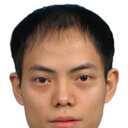Prevalence and determinants of hyperuricemia in middle-aged, urban Chinese men.
Cuvinte cheie
Abstract
BACKGROUND
Hyperuricemia is associated with metabolic syndrome and has emerged as a marker for both type 2 diabetes and cardiovascular disease. We estimated the prevalence and lifestyle risk factors of hyperuricemia in middle-aged, urban Chinese men.
METHODS
The study included 3,978 urban Chinese men 40-74 years of age from a population-based cohort study, the Shanghai Men's Health Study, who were free of type 2 diabetes at baseline and had provided fasting blood samples. Uric acid concentrations were measured by the uricase method. Hyperuricemia was defined as >7.0 mg/dL. Anthropometric measurements and information on lifestyle factors and disease history were collected by in-person interviews.
RESULTS
One quarter of the study subjects had hyperuricemia. Participants with metabolic syndrome had a higher prevalence of hyperuricemia. Body mass index (BMI), waist-to-hip ratio (WHR), waist circumference, and weight gain (since age 20) were positively associated with the prevalence of hyperuricemia. Physical activity was inversely related to the prevalence of hyperuricemia. The odds ratios for hyperuricemia for quintiles of nonoccupational physical activity were 1.00, 0.80, 0.73, 0.75, and 0.57 (P trend <0.001). Participants with hyperuricemia were less likely to be current smokers, but were more likely to drink alcohol regularly. Beer consumption was associated with higher risk of hyperuricemia compared with consumption of wine or liquor.
CONCLUSIONS
In this representative sample of middle-aged, urban Chinese men, hyperuricemia is highly prevalent. Obesity, weight gain in adulthood, and alcohol intake were associated with a higher prevalence of hyperuricemia, whereas daily physical activity and smoking were inversely related to the prevalence of hyperuricemia.


